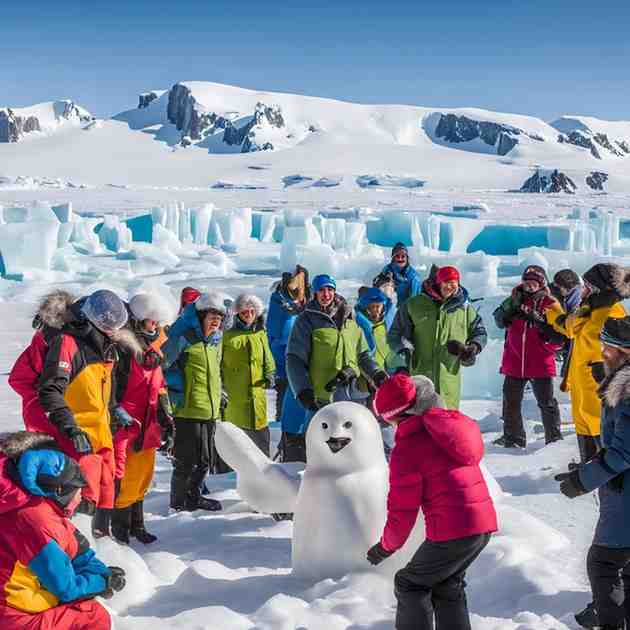Celebrating Antarctica Day: December 1st
Every year on December 1st, the world comes together to celebrate Antarctica Day, a day dedicated to honoring the unique status of Antarctica as a continent of peace, science, and international collaboration. This significant day marks the anniversary of the signing of the Antarctic Treaty in 1959, a groundbreaking agreement that continues to serve as a model for cooperation among nations.
Antarctica Day is more than just a commemoration; it is a celebration of human unity, environmental stewardship, and scientific discovery. Let’s explore the origins, significance, and the vital role Antarctica plays in our world.
The Birth of Antarctica Day
The idea of Antarctica Day was first proposed in 2010 by the Foundation for the Good Governance of International Spaces (Our Spaces). It aimed to raise awareness about the Antarctic Treaty and the importance of maintaining Antarctica as a place for peaceful research.
Antarctica Day is rooted in the Antarctic Treaty, which was signed on December 1, 1959, by 12 nations, including the United States, the Soviet Union, and the United Kingdom. The treaty entered into force in 1961 and has since been signed by 54 nations.
The Antarctic Treaty established the following principles:
- Peaceful Purposes Only: Antarctica was designated as a demilitarized zone, prohibiting military activity.
- Scientific Collaboration: Research is prioritized, with an emphasis on international cooperation.
- Environmental Protection: The treaty prohibits nuclear testing and the disposal of radioactive waste in the region.
These principles have helped preserve Antarctica as a sanctuary for science and a beacon of international harmony.
Why Antarctica Matters
Antarctica is the coldest, driest, and windiest continent on Earth, yet its importance transcends its extreme environment.
1. A Global Climate Indicator
Antarctica plays a critical role in regulating the Earth’s climate. Its vast ice sheets reflect solar radiation, helping to cool the planet. However, climate change poses significant threats to Antarctica, with rising temperatures leading to ice melt and rising sea levels.
Research conducted in Antarctica provides vital data for understanding global warming, ocean currents, and atmospheric changes, all of which impact ecosystems and weather patterns worldwide.
2. A Reservoir of Knowledge
Antarctica is a treasure trove for scientists. From ancient ice cores that reveal Earth’s climate history to unique ecosystems beneath the ice, the continent offers unparalleled opportunities for discovery. The study of microbial life in extreme conditions also provides insights into potential extraterrestrial life on planets like Mars.
3. A Model of International Cooperation
In a world often divided by political tensions, Antarctica stands as a shining example of unity. The Antarctic Treaty fosters collaboration among nations, demonstrating that global challenges can be addressed through shared effort.
Antarctica in Science and Exploration
Research Stations: Living on the Edge
Currently, there are over 70 permanent and seasonal research stations operated by different countries in Antarctica. These stations are hubs for scientific study, focusing on fields like glaciology, astronomy, biology, and geology.
Life in these stations is no small feat. Researchers face extreme temperatures, isolation, and months of darkness during the Antarctic winter. Yet, their dedication drives groundbreaking discoveries that benefit humanity.
Wildlife and Ecosystems
Antarctica is home to unique wildlife adapted to its harsh environment. Species like Emperor penguins, Weddell seals, and Antarctic krill play crucial roles in the continent’s ecosystem. Protecting these species is essential, as they are highly sensitive to changes in temperature and ice conditions.
The Southern Ocean surrounding Antarctica is also a biodiversity hotspot. Efforts to establish marine protected areas aim to safeguard these ecosystems from threats like overfishing and climate change.
The Antarctic Treaty: A Legacy of Peace
The Antarctic Treaty was visionary for its time, setting aside territorial disputes in favor of peaceful and scientific use of the continent. It paved the way for additional agreements under the Antarctic Treaty System, including:
- The Protocol on Environmental Protection (1991): Designates Antarctica as a “natural reserve, devoted to peace and science,” and prohibits mining activities.
- The Convention for the Conservation of Antarctic Marine Living Resources (1980): Ensures sustainable fishing practices and ecosystem protection.
These agreements underscore the importance of preserving Antarctica for future generations.
Antarctica Day: Raising Awareness and Inspiring Action
Antarctica Day serves as an opportunity to engage people around the world in discussions about the continent’s importance and the need for its protection. Events, educational programs, and virtual celebrations help spread awareness.
Educational Outreach
Schools and organizations use Antarctica Day to teach students about the continent’s unique environment and its role in global systems. Virtual tours of research stations and talks by scientists offer insights into life and work in Antarctica.
Calls for Conservation
Antarctica Day is also a platform for highlighting environmental challenges. From plastic pollution to the effects of climate change, raising awareness about these issues inspires action to protect this pristine wilderness.
Antarctica’s Future: Challenges and Opportunities
While Antarctica has been remarkably well-preserved, it faces growing threats:
- Climate Change: Melting ice sheets contribute to sea-level rise, with potentially catastrophic consequences for coastal regions worldwide.
- Tourism Impact: Increasing tourism raises concerns about human impact on fragile ecosystems. Strict regulations are needed to ensure sustainable practices.
- Geopolitical Interests: As resources become scarcer, there is concern about nations seeking to exploit Antarctica’s natural wealth, despite the treaty’s prohibition on mining.
Despite these challenges, Antarctica also presents opportunities for global cooperation in tackling climate change and advancing scientific knowledge.
How You Can Celebrate Antarctica Day

Here are some ways to join the celebration:
- Learn and Share: Read about Antarctica’s history, environment, and the Antarctic Treaty. Share what you learn with friends and family.
- Engage in Conservation: Support organizations working to protect Antarctica and its wildlife. Reduce your carbon footprint to help combat climate change.
- Virtual Events: Participate in online webinars, live-streamed talks, or virtual tours hosted by research organizations.
- Art and Creativity: Express your appreciation for Antarctica through art, writing, or photography, and share it on social media to raise awareness.
Antarctica: A Symbol of Hope
Antarctica is more than a remote, icy continent; it is a symbol of what humanity can achieve when we work together. It reminds us of the importance of preserving our planet’s most fragile ecosystems and the value of cooperation in addressing global challenges.
On Antarctica Day, let’s celebrate the achievements of the past, reflect on the challenges of the present, and commit to ensuring a sustainable future for this extraordinary continent.
Happy Antarctica Day!

